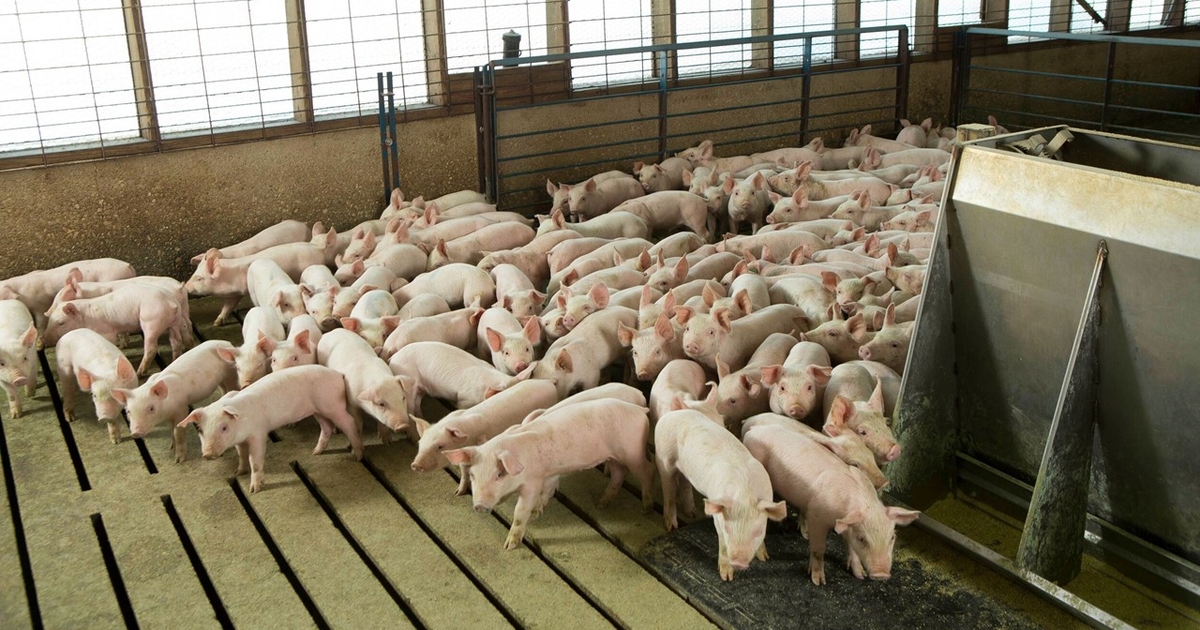
Whether attending a conference, reading National Hog Farmer, or listening to a podcast; you will hear authors frequently use the word “systems.” However, we seldom pause to consider the meaning of systems, why it is important and what are the implications of analyzing livestock production as a system for the health, productivity and environmental sustainability of food production in the expanding context of biofuel production.
A system consists of a set of nodes connected by a common objective. For example, pig feeding system can be analyzed as a set of activities aimed at delivering nutrients for sow reproduction and feeding weaned pigs until they reach market weight. Thinking of pig feeding as a system will help us diagnose and find solutions to problems in new and unforeseen ways. At the 85th Minnesota Nutrition Conference, speakers emphasized the importance of systems thinking.
Hector Menendez, South Dakota State University, emphasized the importance of systems thinking in managing natural resources. He discussed how system dynamics modeling—a technique that simulates production systems—can help avoid unintended consequences when addressing complex resource issues like water use, feed availability and greenhouse gas emissions. For example, applying systems thinking to grassland conversion to cropland and the beef cattle water footprint revealed ways to minimize environmental impact without sacrificing productivity. By using systems models, producers can predict how changes in one part of the system (such as feed policies) affect other areas (like nitrogen runoff or greenhouse gas emissions).
Tim Goldsmith, University of Minnesota, introduced systems thinking as a tool to improve veterinary care and disease management. He explained that traditional veterinary care often follows a linear approach: a problem is diagnosed, treated and monitored until resolved. Systems thinking, however, allows veterinarians to see beyond individual problems and consider how animal health issues interact with environmental and management factors. For instance, the health of sows might be affected by feed quality, housing conditions and biosecurity protocols. By approaching these health challenges from a systems perspective, veterinarians can better address root causes rather than treating symptoms in isolation.
Christian Ramirez-Camba, University of Minnesota, shared how systems thinking can transform swine nutrition, particularly in managing amino acid requirements for optimal growth and health. Through mathematical models, he demonstrated how nitrogen utilization efficiency varies between individual pigs and herds. This difference means that optimizing nutrition for individual pigs may not always translate into maximum efficiency for the entire production unit.
One key finding from systematic reviews of the literature and data mining was that sows and their litter may have a response to supply of nutrient that is complex and dynamic. At low nutrient supply, sows may prioritize litter size at the expense of body weight and reserves. These priorities may change towards fewer piglets born with better survival. Finally, supply of nutrients to the sow at levels higher than routinely tested may lead to optimization of piglet survival and sow herd retention. Ramirez-Camba speculates that these models help explain current industry trends where larger litter sizes are associated with reduced piglet survival and sow health. By using systems-based models, new hypotheses are derived for testing in feeding trials.
In summary, thinking in systems was presented as a framework that can assist livestock nutrition professionals to avoid unintended consequences and explore new interventions when solving problems for modern livestock production. There are many courses, tools and opportunities to learn about systems thinking, here are a few resources.
References
Falkner, Robin, Dale Grotelueschen, and John Groves, eds. Imaging of Systems Perspective in Beef Practice, An Issue of Veterinary Clinics of North America: Food Animal Practice, E-Book: Imaging of Systems Perspective in Beef Practice, An Issue of Veterinary Clinics of North America: Food Animal Practice, E-Book. Vol. 38, no. 2. Elsevier Health Sciences, 2022.
Sanders, Catherine E., Allison R. Byrd, Kristin E. Gibson, Aaron Golson, Kevan W. Lamm, and Alexa J. Lamm. 2023. “Teaching Systems-Thinking Concepts with Hypothetical Case Scenarios: An Exploration in Food-Systems Science Education.” Foods 12 (14): 1–20. https://doi.org/10.3390/foods12142663.
Cummings, Daniel B., John T. Groves, and Benjamin L. Turner. 2023. “Assessing the Role of Systems Thinking for Stocker Cattle Operations.” Veterinary Sciences 10 (2). https://doi.org/10.3390/vetsci10020069.
Turner, Benjamin L., Melissa Wuellner, Erin Cortus, and Steven Boot Chumbley. 2022. “A Multi-University Cohort Model for Teaching Complex and Interdisciplinary Problem-Solving Using System Dynamics.” Systems Research and Behavioral Science 39 (2): 185–99. https://doi.org/10.1002/sres.2778.
Ramirez-Camba, Christian D., and Crystal L. Levesque. 2023. “The Linear-Logistic Model: A Novel Paradigm for Estimating Dietary Amino Acid Requirements” Animals 13, no. 10: 1708. https://doi.org/10.3390/ani13101708.
